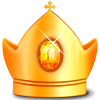-
-
11Jeremiah Peterson:A New Occurrence of The Seven Aurae in a Sumerian Literary Passage Featuring Nergal
-
15自《A Dictionary of Ancient Near Eastern Mythology》 ————《古代近东神话词典》 104页 虽然于《古代近东神话词典》一书中,基(KI)的词条目,用“破折号”伸引,写着苏美女神(Sunmerian goddess),但正文解释中,有这么一句话:迄今为止,还没有证据表明这是一个“真正的”神灵,有谁以该(神)名进行过祭祀。——笔者渣翻,详见图中红线。 Nin.ki seems to be an artificially constructed counterpart for the purpose of the list.————宁基似乎是”作为对应物“人为的
-
6正面 I 守护女神宁孙穆娜带来了啤酒和面包。 守护女神宁孙穆娜很睿智。 她唤醒了他, (并且)躺在他的脚边。 II 聪明的卢伽尔班达 把守护女神宁孙穆娜依偎 在他身边; 他亲吻她的眼睛, 他亲吻她的嘴唇; 然后他又更加的聪慧。 III [ 卢伽尔班达 (?) ] 他…… 他在那儿摊开新鲜的草。 在草木宜人的地方, 直到天亮, 他们一直住在伊里亚扎(Iri’aza)。 IV [守护女神宁孙穆娜(?)] 是如此睿智。 她拿起了那个泥板信封。 守护女神宁孙穆娜对卢伽
-
5
-
8
-
6
-
9
-
1Benjamin R. Foster. Before The Muses-An Anthology OF Akkadian Literature. P376-380.(2005)
-
4Jean Bottéro的作品,内含比较出名的,俗称耶鲁大学烹饪泥板的早期翻译。
-
5Naram-Sins_War_against_Armanum_and_Ebla “自远古的时代以来,自人类诞生以来,没有哪位国王曾用涅伽尔的大斧掠夺阿曼努姆(Armanum)和埃勃拉(Ebla),他(= 达干)为纳拉姆辛(Naram-Sin)开辟了强大之路,并赐予他阿曼努姆和埃勃拉。” 这样就打开了纳拉姆辛征服了的著名说法。这一事件无疑代表了阿卡德国王的一项重大军事的成就,纳拉姆辛的绰号“阿曼努姆和埃勃拉的征服者”也证明了这一点。 。 到目前为止,有关纳拉姆辛对叙利亚的战役的唯一具
-
4如题所示
-
4内容完全节选自Niek Veldhuis的著作《RELIGION, LITERATURE, AND SCHOLARSHIP: THE SUMERIAN COMPOSITION NANSE AND THE BIRDS,with a catalogue of Sumerian bird names》
-
12
-
0《 Study on the Synchronistic King List from Ashur》 作者为北京大学助理教授陈飞,曾经著有《亚述历次迁都比较研究》、《谁归还了马尔都克神像?<年代记P>相关记载考》、《<亚述王表>译注》、《<同步王表>译注》等论文。 本书预定将由国际著名学术出版社brill在2020年8月20日出版,归属于知名从编“楔形文字专著(Cuneiform Monographs)”,为此系列的第51卷。此系列可谓是亚述学研究中的旗舰,每本都具有被国际亚述学界所认可的出色品质和高雅
-
3一、主旨要求 本吧发帖无规定主题格式。内容主要基于【亚述学Assyriology】以及其相关学科,并根据考古学、历史学、文学等学科方向的知识进行讨论,所以请尽量将主题归于此类话题。其他主题的存续与否吧务有自由裁量权。
-
10
-
3
-
1
-
12
-
14萨拉·J·米勒斯坦:《追踪熟练抄写员:在圣经和美索不达米亚文学中通过绪言(Introduction)进行修订》 Sara J. Milstein.Tracking the Master Scribe:Revision through Introduction in Biblical and Mesopotamian Literature 总览 · 第一个全面研究“通过绪言(Introduction)修改”的抄写方法 · 提供深入的案例研究以及对著名的圣经和美索不达米亚文本的新解释 · 提出了一种进行文学史研究的新方法,该方法以大块的材料为重点,以视角发生重大转变作为指标 · 并排放置两个主要语
-
5A quadrilingual royal inscription from the Achaemenid period (ca. 547-331 BC) This alabastron contains the phrase, "Artaxerxes, the king" in 4 different languages. 1. a-r-t-x-$-c,-a : x-$-a-y-t'-i-y Artaxerxes, the king. # Persian 2. {disz}ir#-tak-ik-ša2-iš-sza2 dišsunki Artaxerxes, the king. # Elamite 3. (diš)ar-ta-ak-ša2-as-su _lugal_ Artaxerxes, the king. # Akkadian 4. 3-rw-T-xA-S-s-SA pr-aA Artaxerxes, the king. # Egyptian Artaxerxes, the son of Xerxes, was king of Persia from 465-424 BC. Little archaeological remains exist for his rule, leaving scant information except
-
18副本很多,几块砖或泥板上都有这砖印铭文,能得到很好的复写线稿,便于浏览阅读。 1. en-an-na-tum2-ma Enanatum 2. en ki-ag2 {d}nanna loving priestess of Nanna, 3. en {d}nanna priestess of Nanna, 4. sza3 uri5{ki}-ma in Ur, 5. dumu# {d}isz-me-{d}da-gan# child of Išme-Dagan 6. lugal ki-en-gi ki-uri king of Sumer and Akkad. 五格,但要做六行去理解。 恩安纳吞(Enanatum)……我发现互联网上的中字翻译“埃南那图姆”,“恩南纳图姆”等,是英译得来,但英文没有给间隔。从楔形原字上看,是en-an-na-tum,
-
15
-
2此作品古代名为《学生》 ( dumu-é-dub-ba-a) 。字面意思是 “泥版屋之子”。“泥版屋” ( é-dub-ba-a) 的苏美尔语原意是 “分配泥版之屋”。“孩子/儿子” ( dumu) 用途很广,在不同的语境中意义不尽相同,与 “学校” 搭配,可译为 “学生”。由于学术界和广大读者对克莱默的 《在校之日》( Schooldays) 已耳熟能详,本文继续采用克莱默的名称,而非古代名称。
-
33阿努纳奇?噢,“从天堂来到地球的人“、”苏美人对他们的称呼“,这可真棒。 (d)A-nun-na-ki,字形里有:(d)an=天,a=动词,nun=王子,na=man(男人)和ki=地,这解读真的太棒了,噢,能把阿卡德语读音去用苏美语理解,这脑洞不是奥斯卡,也得诺贝尔吧,对不? 我真很想问一下,苏美人放着自己母语不用,非要用阿卡德语去念? Anunna (Anunnaku, Anunnaki) (a group of gods) The term Anunna indicates a group of gods in the Mesopotamian pantheon. Later on, it is sometimes used to des
-
6
-
10耶利米·彼得森(Jeremiah Peterson)在19年11月新出的翻译版本,包含了作者在2011年出版的尼普尔的其他片段和2019年处理的乌尔的手稿中获得的看法。 1. The lord resolved to go to the mountain that keeps a man alive 2. Lord Gilgamesh resolved to go to the mountain that keeps a man alive 3. He was speaking to his servant, Enkidu: 4. “Enkidu, The strength by which young man lives does not reach the utmost extremity, 5. I want to enter the mountain, I want to establish my name, 6. Where a name does stand (in an inscription), I shall establish my name,
-
64
-
8
-
0
-
8
-
9Though Akkadian as a spoken language in Mesopotamia died out toward the end of the first millennium B.C., cuneiform continued to be used by temple scribes and astrologers. Greek scholars are known to have flocked to Babylon during this time to learn astronomy, and excavated tablets inscribed in both Greek and Akkadian show that at least a few of these visiting astronomers even tried to master the art of writing cuneiform. But the end was near. The last known tablets that can be dated were written in the late first century A.D. Some scholars believe cuneiform ceased to be used around that time,
-
3目前已知的最古老菜谱,来自古巴比伦时期 The earliest known recipes, by many centuries, are found on three tablets dating to the Old Babylonian period. Though seemingly simple, their minimal instructions could only have been followed by experienced chefs working for the highest echelons of society. This particular tablet features 25 recipes for stews and soups, both meat and vegetarian, including some directions—though no measurements or cooking times—for an amursanu-pigeon stew: Split the pigeon in half—add other meat. Prepare the water, add fat and salt to taste; Bread
-
1
-
7
-
8
-
43
-
5
-
21
-
4
-
7
-
153
-
2
-
72
-
11
-
6
-
29
-
64【内容提要】19世纪末,法裔英国人拉克伯里自称运用“语言科学”和“历史科学”的方法发现了中国上古史的秘密:黄帝裔出巴比伦,汉人的祖先是巴比伦人



 天国王...
天国王...
 恩奇都
恩奇都



